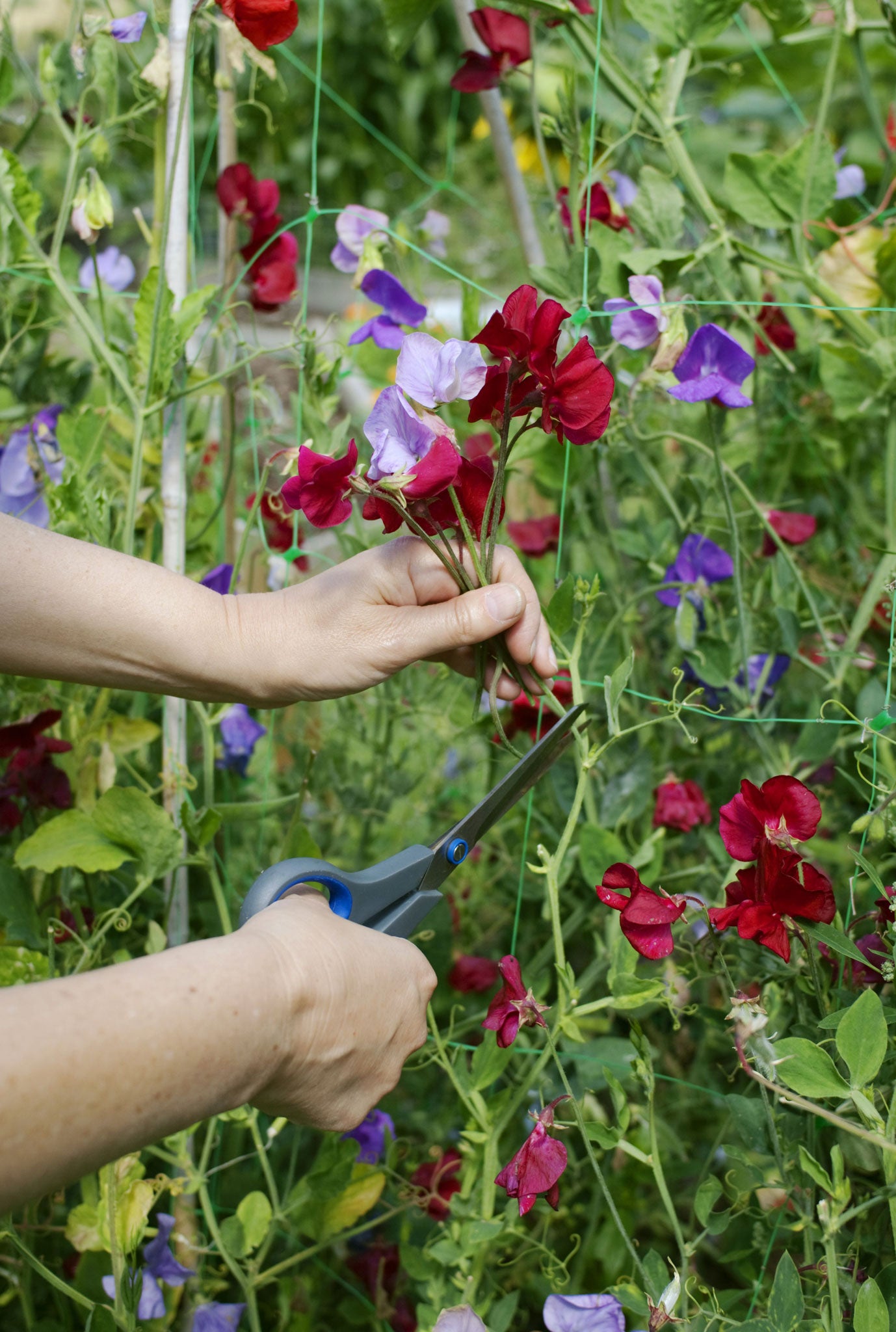The Independent's journalism is supported by our readers. When you purchase through links on our site, we may earn commission.
How to ensure a boundless supply of flowers from spring to the first frosts

What are those things called? The cardboard tubes from inside a roll of bog paper. Do you call them "toilet-tissue tubes"? Or "loo-roll thingies"? Anyway, those. I looked under the stairs the other day and I had about seven. What was I saving them for, I wondered. And then I remembered: sweet peas.
Like many deeply well-adjusted people, I nurture secret fantasies of owning a few acres of cutting garden – preferably walled – with several staff in full-time employment. And maybe some interns. The reality is that most years, it's as much as I can do to save up seven loo-roll thingies and sow some sweet peas, which may or may not make it to actual blossom in a flower bed. (Sweet peas have long root runs and need a deeper sowing container than normal seedlings, so lots of people swear by a toilet-roll tube full of soil.)
So, not very impressive. However, Louise Curley, author of new book The Cut Flower Patch (£20, Frances Lincoln), takes a slightly more energetic view of what might be florally possible for an ordinary person who is majorly lacking, for the foreseeable future, in acreage, staff or interns. This beautifully illustrated, completely user-friendly book begins with annuals, and works its way right the way through to cutting shrubs such as viburnum, with nary an undergardener in sight.
Curley is clear: a little bit of effort, in particular around the planning stages, can yield impressive results. She has two beds on her allotment devoted to flowers alone, and reckons to fill several buckets with stems in bloom "every week through the spring, summer and into autumn". And now, in early March, is definitely the time to start thinking about having an especially floriferous year, with sowing of annuals just getting under way.
Her main criteria for a cutting patch is just a good amount of full sun. This probably means seven or eight hours of sunshine a day, without which you will have trouble getting the desired results. But what results. Curley's tiniest plot plan suggests a square of cutting Dahlia "Karma Choc", one of Cosmos "Candy Stripe", one of sweet William, and a bamboo pyramid of sweet peas. This combo would give you bunch after bunch of good flowers in spring, through June and July; and then on to first frosts if you keep picking the dahlia and cosmos. Supplementing with greenery gathered from here and about, even this tiny area turned over to pure flower production could be a convincing argument for itself.
Other enthusiastic bloomers she recommends are old-fashioned favourites larkspur, nigella, cornflowers, honesty and one of my favourite cut flowers, sweet rocket, which has extraordinary perfume along with being pathetically easy to grow (my opinion, not hers). It really will be a traditional cottage bed if you fit all that in.
But back for a moment to the sweet peas. For greatest fragrance, Curley reckons, you need mostly to avoid modern varieties, and go for older strains. These tended to be rejected in the past because the flowers didn't last long. But once a garden sweet-pea plant is in full flowering flow, there's no stopping it; the problem tends more to be one of over-production than insufficiency. Curley suggests two sowings, one in early spring around now, for early summer plants, and then another to keep flowering going right into school holidays.
And her last sentence sends me back to my first: "It is a good feeling to pop the hard, shot-like sweet-pea seeds into their compost. And so the cycle begins again." Bringing me neatly back to my bog-roll tubes.
Curley's earlies perfect for a cutting garden
Dahlia 'Karma Choc'
Bred to last longer in the vase than conventional dahlias, these are a velvety red in starlike shapes. For planting in late March. 3 tubers for £10.95, sarahraven.com
Cosmos 'Candy Stripe'
Pink-edged, flowering until first frosts or till knackered, whichever comes first. Start now in trays and plant out in May/June. £2.05 for 60 seeds, mr-fothergills.co.uk
Sweet William
Usually taking two years to flower, some new varieties have been bred to skip the wait. Try “Sweet Red”. 10 plants for £14.50, with April delivery, sarahraven.com
Sweetpea 'Fire & Ice'
Louise Curley says, “My current favourite. Incredible scent and lasts longer than others.” 20 seeds for £2.05,mr-fothergills.co.uk
Subscribe to Independent Premium to bookmark this article
Want to bookmark your favourite articles and stories to read or reference later? Start your Independent Premium subscription today.

Join our commenting forum
Join thought-provoking conversations, follow other Independent readers and see their replies